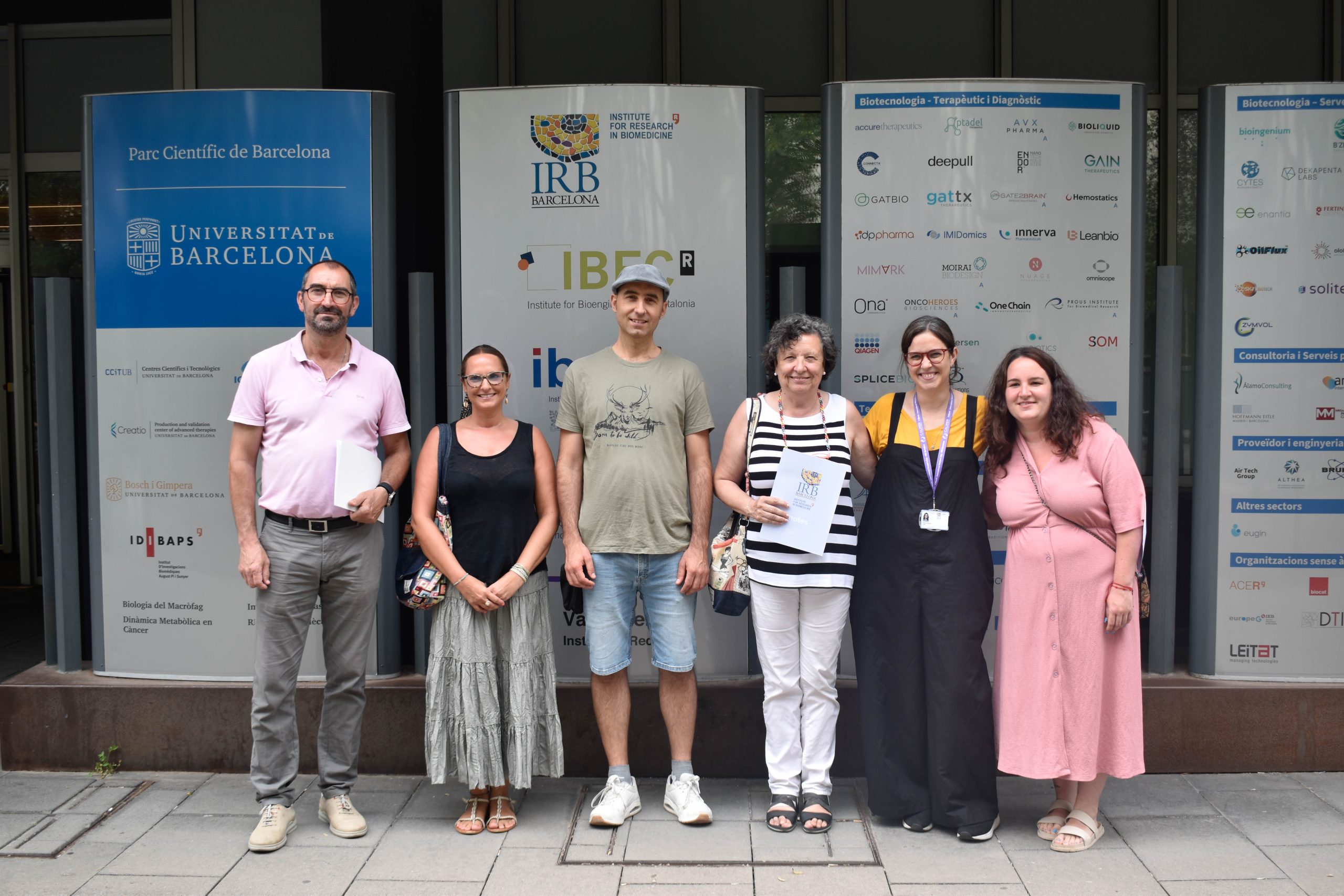To begin with, they introduced us the IRB: what it is, how they work, how they are financed and what lines of research they work on. One of them is fundamental research, to understand the mechanisms of how cells work and how this knowledge could be used to better understand certain diseases such as cancer and can open doors to future research. They explained to us that due to the complexity of these investigations, a project in the field of fundamental research can take, if successful, between 10 and 15 years until new treatments reach hospitals. Even when a fundamental research project does not give clearly positive results, the collaboration between centers and the sharing of information that currently exists allows a partial result in the project developed by a center to be the key to the success for the project that is carried out in another research center.
In a different research field and more focused on sarcoma, they told us about a very interesting research project they are currently working on, to understand how sarcoma cells that reach the lungs are able to specifically modify the immune response within of the metastatic lesion and modulate it to its benefit. In fact, they have already observed that pulmonary metastatic lesions are highly infiltrated with immune cells different from those that can be observed in healthy lungs.
Although this project studies lung metastases in pediatric osteosarcoma patients, the findings could also help find therapies in other types of sarcoma, in which lung metastasis is also common, because the tumor immune microenvironment (TiME) is similar. In this way, they will be able to compare the features presented by TiME in lung metastases from different sarcomas.
Then they accompanied us on a guided tour of the different “Stem Cells and Cancer” laboratories that they have at the IRB. There, they showed us the environment in which the center’s researchers work on a daily basis. Additionally, they also showed us the step-by-step process they usually follow to prepare the tissue samples and the sophisticated machinery they use to create the images so that they can be analyzed with computers by the laboratory staff. This is when we realized how complex the world of research is and the high cost involved in the center acquiring all the equipment.
In general, we were satisfied to be able to meet one of Catalonia’s pioneer research centers in biomedicine, with which we could establish collaboration agreements in the near future, to help finance projects to find new treatments for sarcoma.
